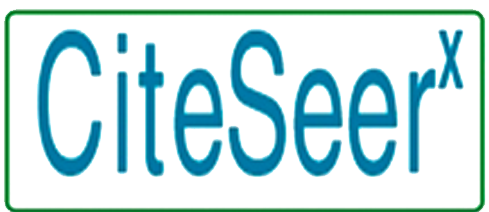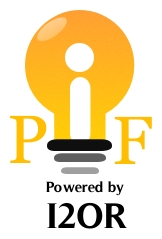MOLECULAR IDENTIFICATION OF ANTHRACHNOSE PATHOGEN (Colletotrichum musae) IN BANANA FRUITS AND THE USE OF EXOPHITIC AND ENDOPHYTICFUNGI TO CONTROL THE PATHOGEN
Abstract
Banana rot disease is often found in Bali, especially bananas are the main means for completing religious ceremonies in Bali. Banana rot often spoils during storage or post-harvest. The results showed that the cause of banana rot disease was Colletrotrichummusae with DNA fragments measuring 650 bp successfully amplified using universal primers ITS1/ITS4. The highest in vitro inhibition of exophytic fungi against pathogens was achieved by A. niger, Neurospora sp. and Rhizopus sp. each with an inhibitory power of 100%, the lowest was achieved by Neurospora sp. at the time of days after inoculation (DAI) by 50%. While the inhibition of endophytic fungi against pathogens was Rhizopus sp. with inhibition of 100% from 1 DAI to 4 DAI followed by A. niger at 100% at 3 and 4 DAI. The results of the in vivo inhibition of selected exophytic and endophytic fungi against pathogens were as follows: the highest inhibitory power was C (Rhizopus sp.1) of 94±5.48%, followed by treatment A (A. niger 1) of 92±8.37%, treatment B (A. niger 2) was 64±5.48% %, treatment E (Rhizopus sp. 2) was 54±5.48%, and the least inhibition was treatment D (Neurospora sp. 1) by 44±5.48%.
Downloads
References
Biology and TechnologyAn international journal57(5): 621-629.
Simamora, A.V., M.V. Hahuly, and J. Bd. Henuk. 2021. Endophytic fungi as potential biocontrol agents of Phytophthorapalmivorain the cocoa plant. Biodevarsitas. 22(5): 2601-2609.
Ajay Krishna Saha, A.K. R.Aparajita and P. Das. 2013. Fungal Colonization of Phylloplane of Psidium guineenseSw. Growing in Suryamaninagar, Tripura,
Northeast India. International Journal of Basic and Applied Chemical Sciences 3 (1): 62-67.
Thakur, S. and N.S.K. Harsh. 2016. Biocontrol Potential of Phylloplane Fungi
Against Alternaria Alternata Causing LeafSpot in Rauwolfia Serpentina in Vitro.Research Paper. 5(2): 14-15.
Yadav, S.L., A.K Mishra, P.N. Dongre and Rashmi Singh. 2011. Assessment of fungitoxicity of phylloplane fungi againstAlternaria brassicaecausing leaf spot of mustard. Journal of Agricultural Technology7(6): 1823-1831.
Ferianita-Fachrul, M., H. Haeruman, dan L.C. Sitepu. 2005. KomunitasFitoplanktonSebagai Bio-IndikatorKualitasPerairanTeluk Jakarta. FMIPA-Universitas Indonesia Depok.
Dolar, F.S. 2001. Antagonistic effect of Aspergillus melleus Yukawa on soilborne pathogens of Chickpea. TarimBilimleriDergisi, 8(2): 167-170.
Mojica-Marin, V., H. A. Luna-Olvera, C. Fco, Sandoval-Coronado, B. Pereyra- Alférez, H. Lilia, Morales-Ramos, E. Carlos, Hernández-Luna and G. O. Alvarado-Gomez. 2008. Antagonistic activity of selected strains of Bacillus thuringiensis against Rhizoctonia solaniof chili pepper. African Journal of Biotechnology, 7 (9): 1271-1276.
Pirzan, A.M., dan P. R. Pong-Masak. 2008. HubunganKeragamanFitoplanktondenganKualitas Air di PulauBauluang, KabupatenTakalar, Sulawesi Selatan. Biodiversitas, 9 (3) 217-221.
Rad, J.E., M. Manthey and A. Mataji. 2009. Comparison of Plant Species Diversity with Different Plant Communities in Deciduous Forests. Int. J. Environ. Sci. Tech, 6(3): 389-394.
Odum, E.P. 1971. Fundamentals of Ecology. Third Edition. W.B. Saunders Company.Philadelphia, Toronto, London. Toppan Company, Ltd. Tokyo, Japan
Thompson, A. K. and O. J. Burden. 1995. Harvesting and fruit care. In: Bananas and plantains, S. Gowen, Chapman & Hall. 403-433 p.
Meredith, D. S. 1960. Studies on GloeosporiummusarumCke.& Mass. causing storage rots of Jamaican Banana. II. Somefactors influencing anthracnose development. Ann. Appl. Biol.48(3):518-528.
Stover, R. H. and N/W. Simmonds. 1987. Diseases and disorders. In: Bananas, Longman, 281-323 p.
Wardlaw, C. W. 1934. The nature and occurrence of pitting diseases and fruit spots. Tropical agriculture. 11: 8-13 p.
Sutton, B. C. and J.M. Waterston. 1970. Colletotrichum musae.CMI Description of pathogenic fungi and bacteria. CMI. No.222.
Faisal, P.M., K. Nagendran, T. P.Ranjitham,P.Kalaiselvi, R. Senthil, K. Gandhi,
R.Thiruvengadam and K. Prabakar. 2011. Specific Detection of Colletotrichum musaeInciting Anthracnose Disease in Banana. Libyan Agriculture Research Center Journal International 2 (6): 279-286.
Jeffries, P., J.C. Dodd, M.J. Jeger and R.A. Plumbley,1990. The biology and control of Colletotrichumspecies on tropical fruit crops. J. Plant Pathol.,39: 343-366.
Balendres, M.A., J.V. Mendoza and F.D. Cueva. 2020. Characteristics of Colletotrichum musae PHBN 0002 and the susceptibility of popular banana cultivars to postharvest anthracnose. Indian Phytipathology. 73: 57-64.
Samson, R.A., E.S. Hoekstra, and C. A.N. Van Oorschot. 1981. Introduction to Food-Borne Fungi.CentraalbureauVoor-Schimmelcultures. Institute of The Royal Netherlands. Academic of Arts and Sciences.
Indrawati. G., R.A. Samson, K. Van den Tweel-Vermeulen, A. Oetari dan I. Santoso. 1999. Pengenalan Kapang Tropik Umum. Yayasan Obor Indonesia. Universitas Indonesia (University of Indonsia Culture Collection) Depok, Indonsia dan Centraalbureau voor Schirmmelcultures, Baarn, The Netherlands.
Pitt, J.I. and A.D. Hocking. 1997. Fungi and Food Spoilage. Blackie Avademic and Professional. Second Edition. London-Weinhein-New York-Tokyo-Melboune-Madras.
Barnett, H.L. and B.B. Hunter. 1998. Illustrated Genera of Imperfect Fungi. APS Press. The American PhytopathologicalSociey. St Paul, Minnesota.
Miyadoh, S. 1997. Atlas of Actinomycetes. Asakura Publishing Co Ltd. Japan
Doyle, J. J. and J. L. Doyle. 1987. A rapid DNA isolation procedure for small quantities of fresh leaf tissue. Phytochem. Bull, 19: 11-15.
Sudarma, I M., N. N. Darmiati and N.W. Suniti. 2019. Fungus and Actinomycetes Diversity of Exophytic and Endophytic in Red Grape and its Inhibition Ability to Pathogen Aspergillus niger(Caused Rot Fruit Grape). Int.J.Curr.Microbiol.App.Sci 8(10): 2442-2451.
Sudarma, I M., N. W. Suniti and N. N. Darmiati. 2020. Use of exophytic microbial on the controlof fruit rot diseases of mango (Lasiodiplodiatheobromae). Int.J.Curr.Microbiol.App.Sci9(4): 845-854.
Copyright (c) 2021 GPH - IJAR International Journal of Agriculture and Research

This work is licensed under a Creative Commons Attribution-NonCommercial-NoDerivatives 4.0 International License.
Author(s) and co-author(s) jointly and severally represent and warrant that the Article is original with the author(s) and does not infringe any copyright or violate any other right of any third parties, and that the Article has not been published elsewhere. Author(s) agree to the terms that the GPH Journal will have the full right to remove the published article on any misconduct found in the published article.


























